Buildings and cities today are increasingly interconnected with sensors providing real-time information for security, facility, environmental and enterprise management applications. The exponential rise in the number of installed sensors brings out the challenge of real-time situation awareness to city and building managers i.e. the challenge of swiftly and correctly interpreting the real-time data avalanche, making decisions and responding to real-time situations.
When emergencies and incidents happens, we want building/cities managers to be focused on handling the situation, instead of wasting time trying to figure out what does the alarms from multiple silo systems means.
NUCLEUS interposes the avalanche of real-time data and analytics from silo sensor networks with 3D building information to provide comprehensive situation awareness to premise managers. This gives building/cities managers a big picture (combined view) which is essential to execute incident or emergency management.
Using NUCLEUS’s open sensor API as a neutral platform, NUCLEUS integrates with a diverse range of sensors, from live CCTV videos, to access control systems, to network management systems and environmental sensors. Unlike traditional 2D map-based solutions which provide piecemeal situation views, NUCLEUS converge all disparate plans and drawings into one single interactive 3D premise model rendering to enables managers to fully understand real-time situations in a single, unified view.
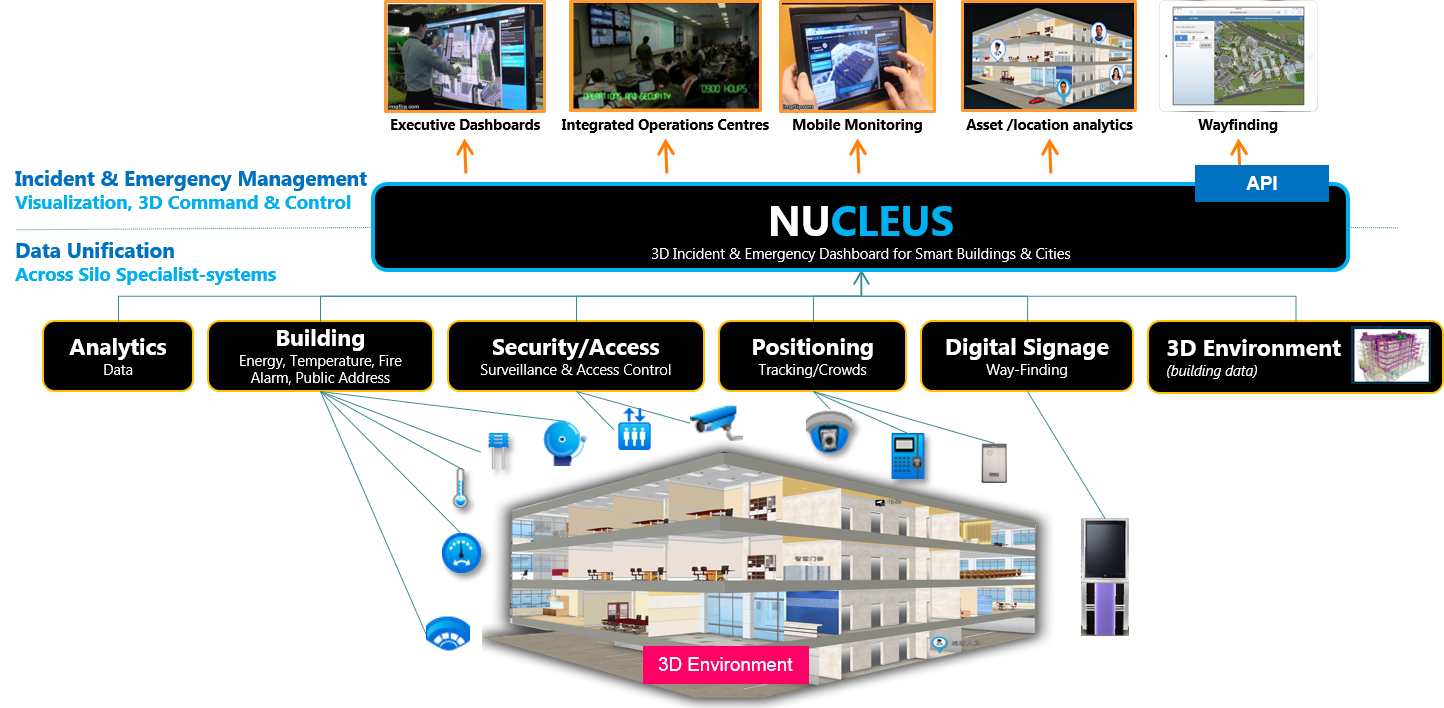
NUCLEUS is thus ideal for deployment in operations centres and command centres for use in the main large-screen displaying the overall real-time 3D situation view for emergencies and incidents management.
Typically, an emergency and incident management workflow looks like this:
- Gathering and unification of data from various systems.
- Visualization and presentation of data on a single platform. Highlighting of alarms.
- Make plans, predict trends, report situation updates.
- Execution of mitigation plans
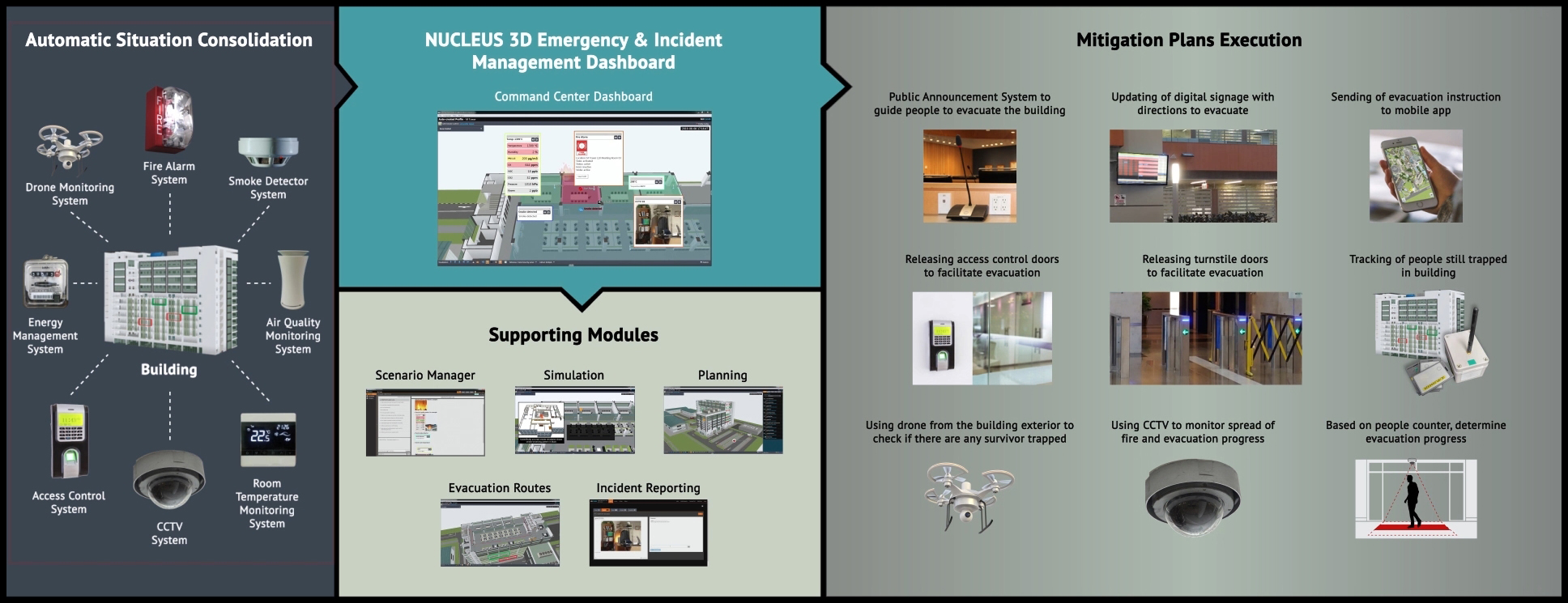
Going beyond just data visualization and monitoring provided by existing products in the market, NUCLEUS goes the extra mile to provide supporting modules, so that building managers and operators can do so much more than just passive monitoring of building/city operations. NUCLEUS supporting modules works together to provide essential planning, prediction and reporting tools for operators to methodically and effectively handle emergencies and incidents.
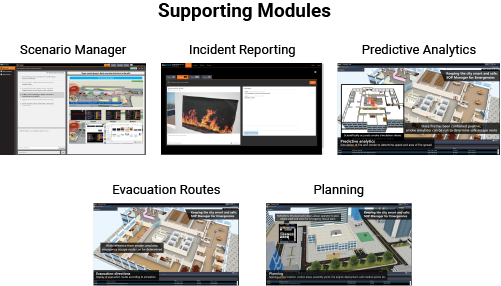
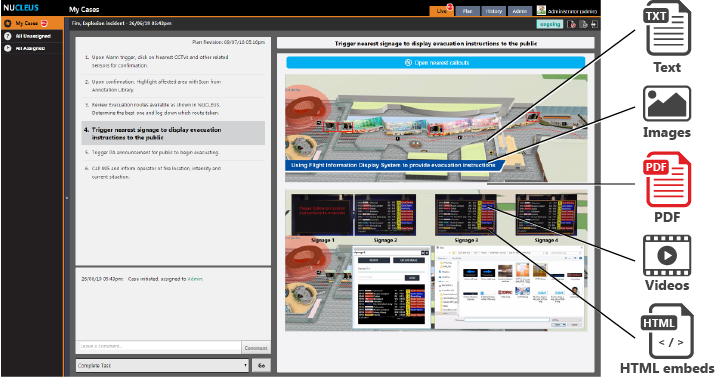
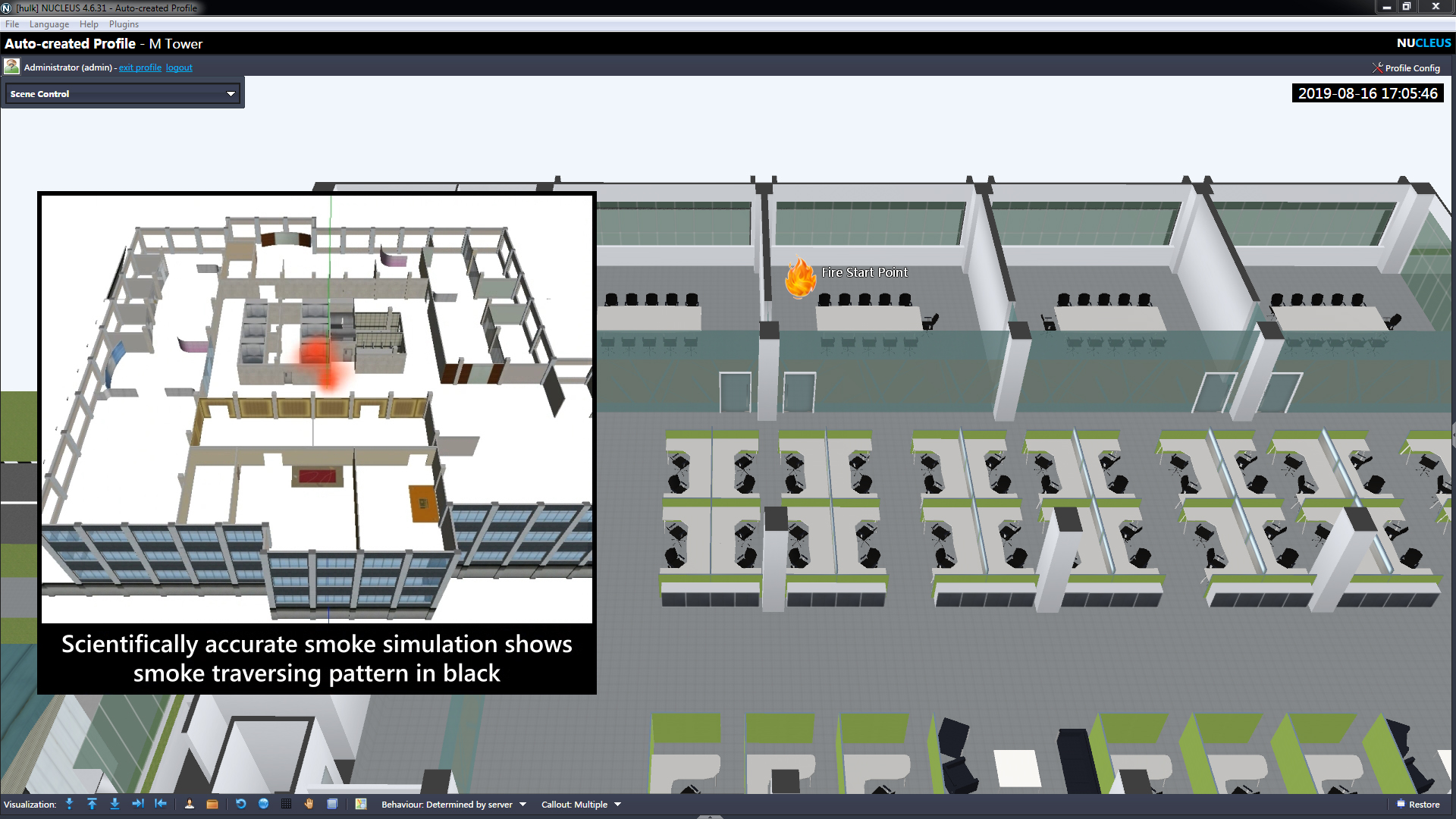
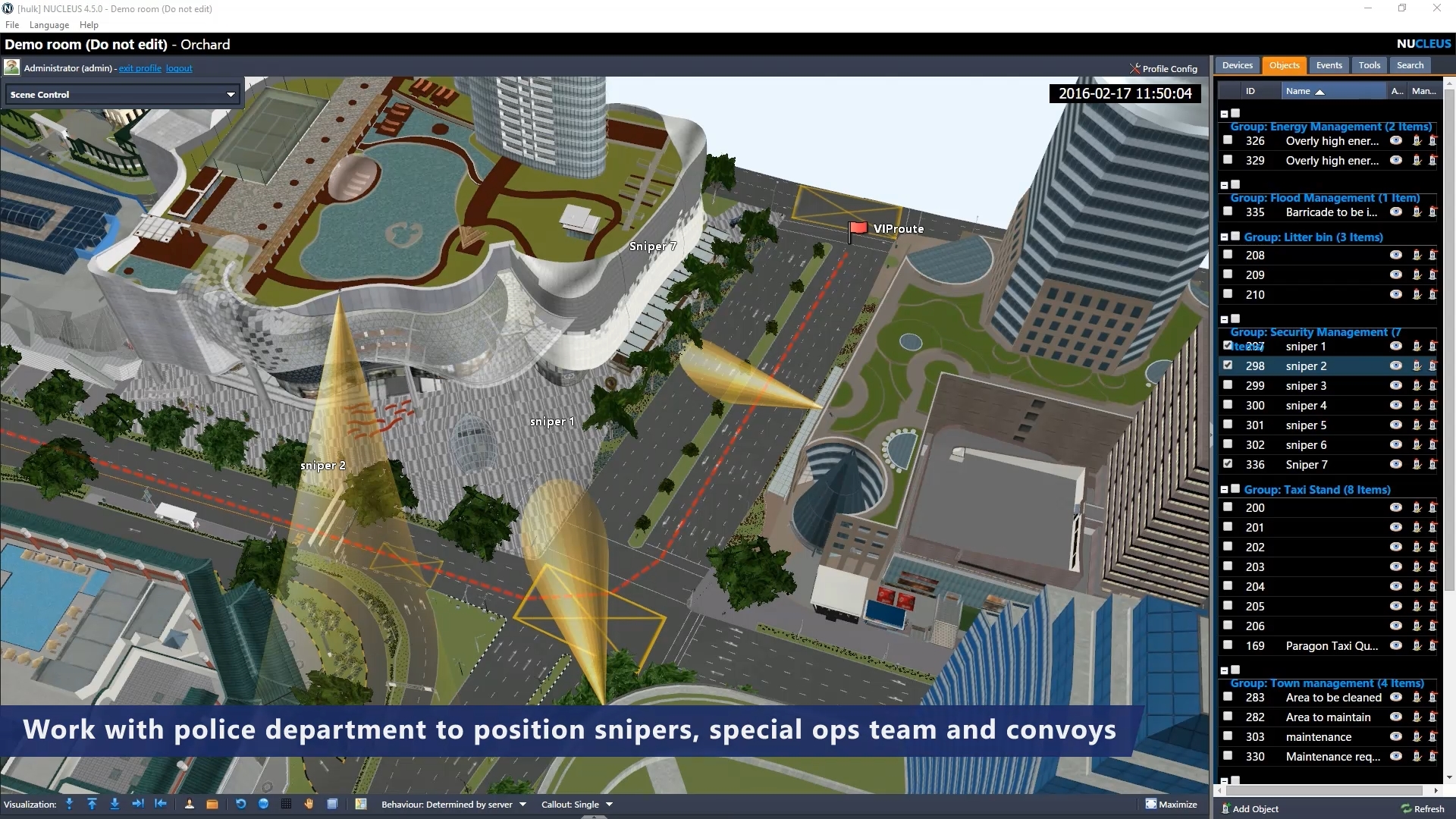
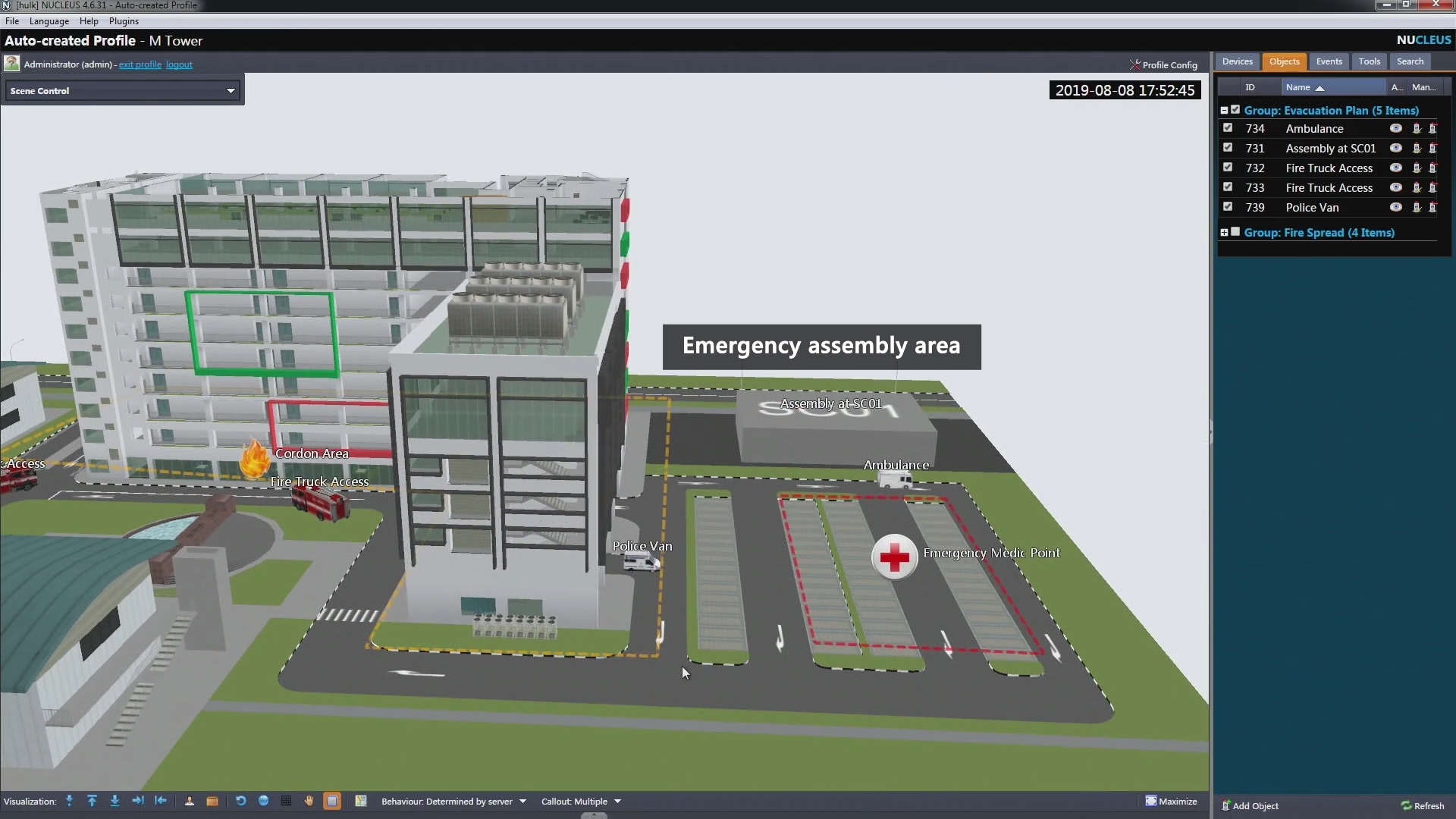
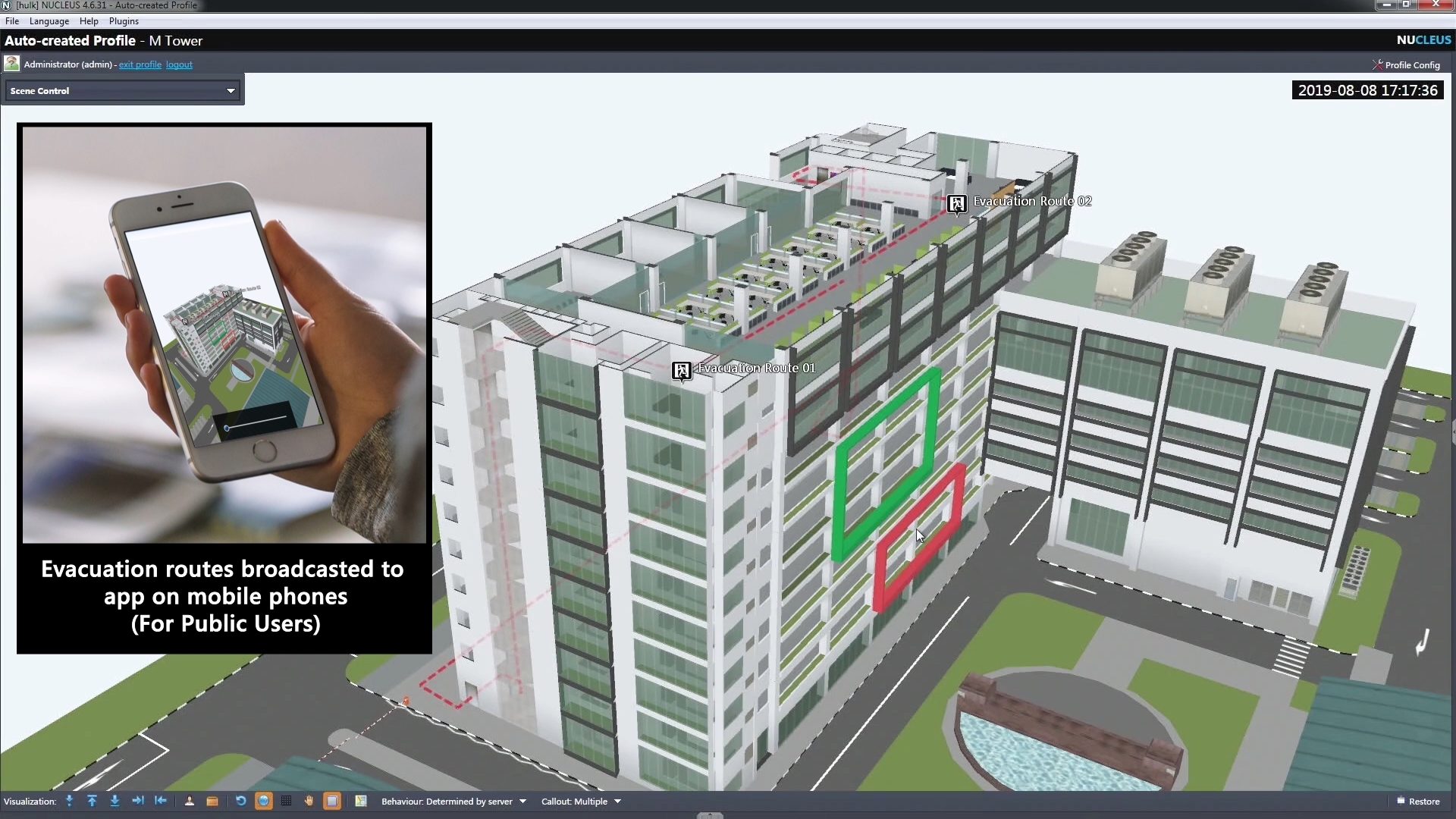
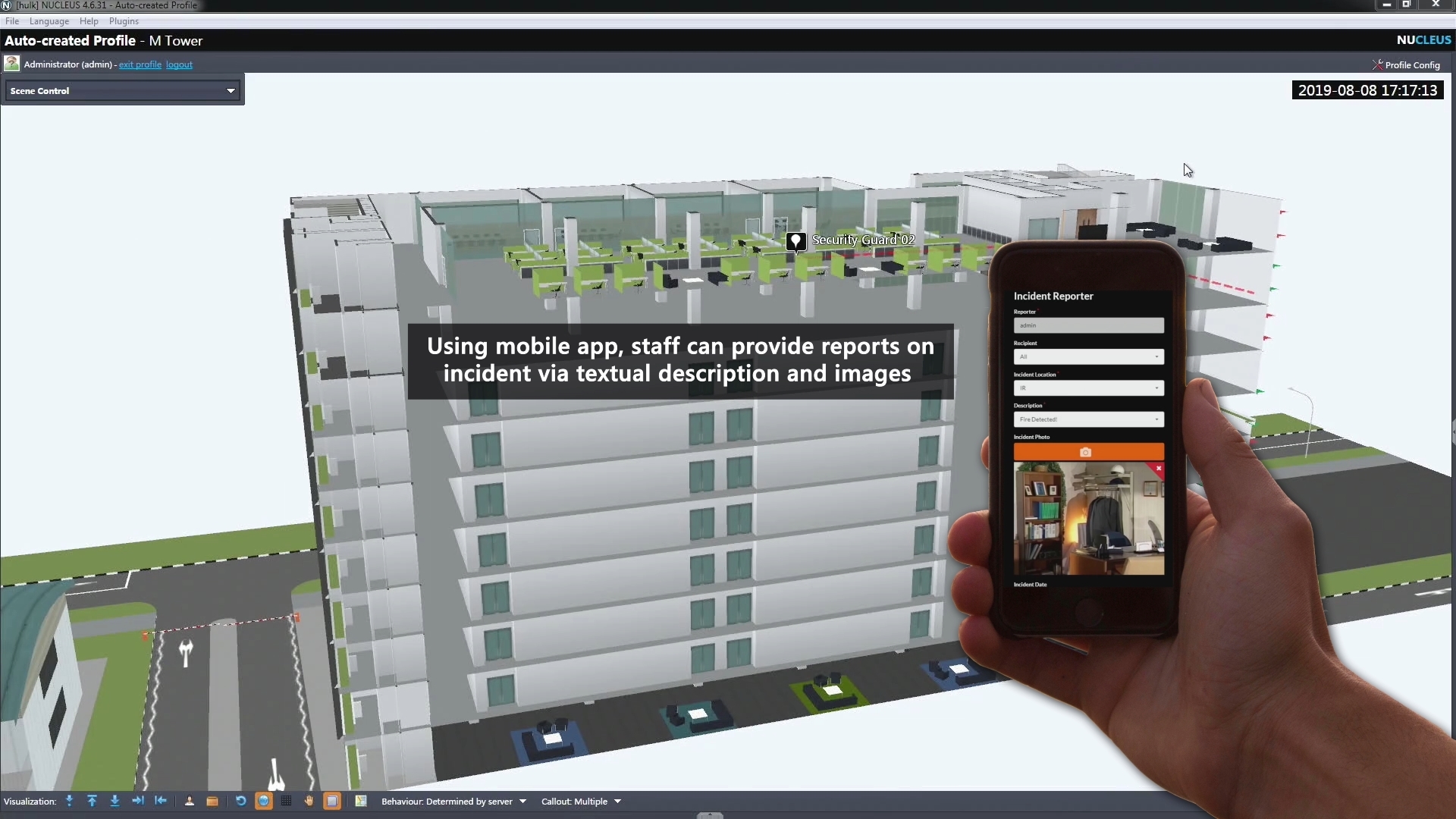
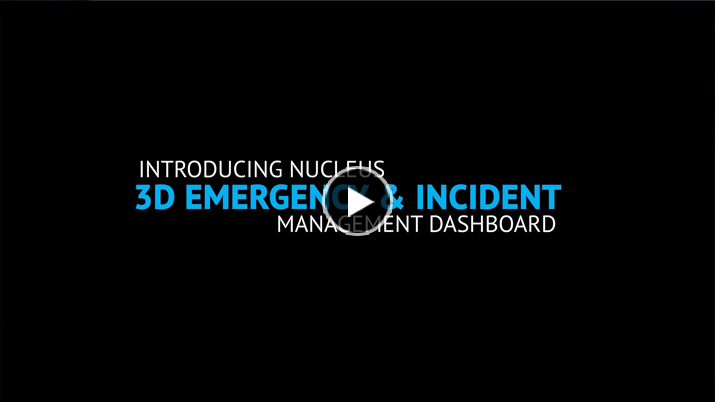
Sensor detects possible emergency and is reflected on NUCLEUS
Fire alarm, smoke detector and air quality monitoring system detects possible fire. Fire alarm is activated and shown on NUCLEUS Command Control Dashboard.
Activate Scenario Manager and follow instructions to manage emergency
Operator starts fire scenario response plan. Operator records actions while performing each instruction.
Verify if alarm is true by cross checking with sensors in the vicinity
Abnormally high temperature found, CCTV view shows signs of open flames.
Run simulations to get insights on possible scenario progression
Operator runs fire and smoke simulation to determine speed and area of fire spread. This helps the Operator to plan safe escape routes too.
Plan out evacuation operations
Operators plans and marks out area to cordon and deploys predesigned zoning (safety assembly spot, medic tents, fire engines parking area etc.). These plans are later on used for deployment briefing internally and shared with 3rd party joint operations such as the fire and police departments.
Determine and broadcast evacuation routes
Through the evacuation module, evacuation routes are broadcasted to app on mobile phones and all digital signage. Using public announcement system, instruct every one in the building to evacuate.
Get latest situation updates from ground staff
Using Incident Reporter security staff can provide textual and image updates on the situation.
Engage all integrated management systems in evacuation process
Operator checks that all access doors and speed gates are open for evacuation. With the aid of RFID tracking and people counters, Operators can monitor and check on the progress of the evacuation. Drones can also be deployed outside the building to give live stream on the fire conditions and search for missing persons.
NUCLEUS’s open platform allows integration of information, signals and alarms from various separate systems and combines them on a single Command Center Dashboard for one stop monitoring. This streamlines workflow as Operator now only needs to monitor and control one master dashboard for full situational awareness.
NUCLEUS provides round the clock automatic monitoring. When NUCLEUS detects unusual readings in the sensors, an alarm is triggered, and the dashboard’s view is automatically zoomed into the alarm’s location, giving Operator a clear view of alarm data and location (both visually and textually).
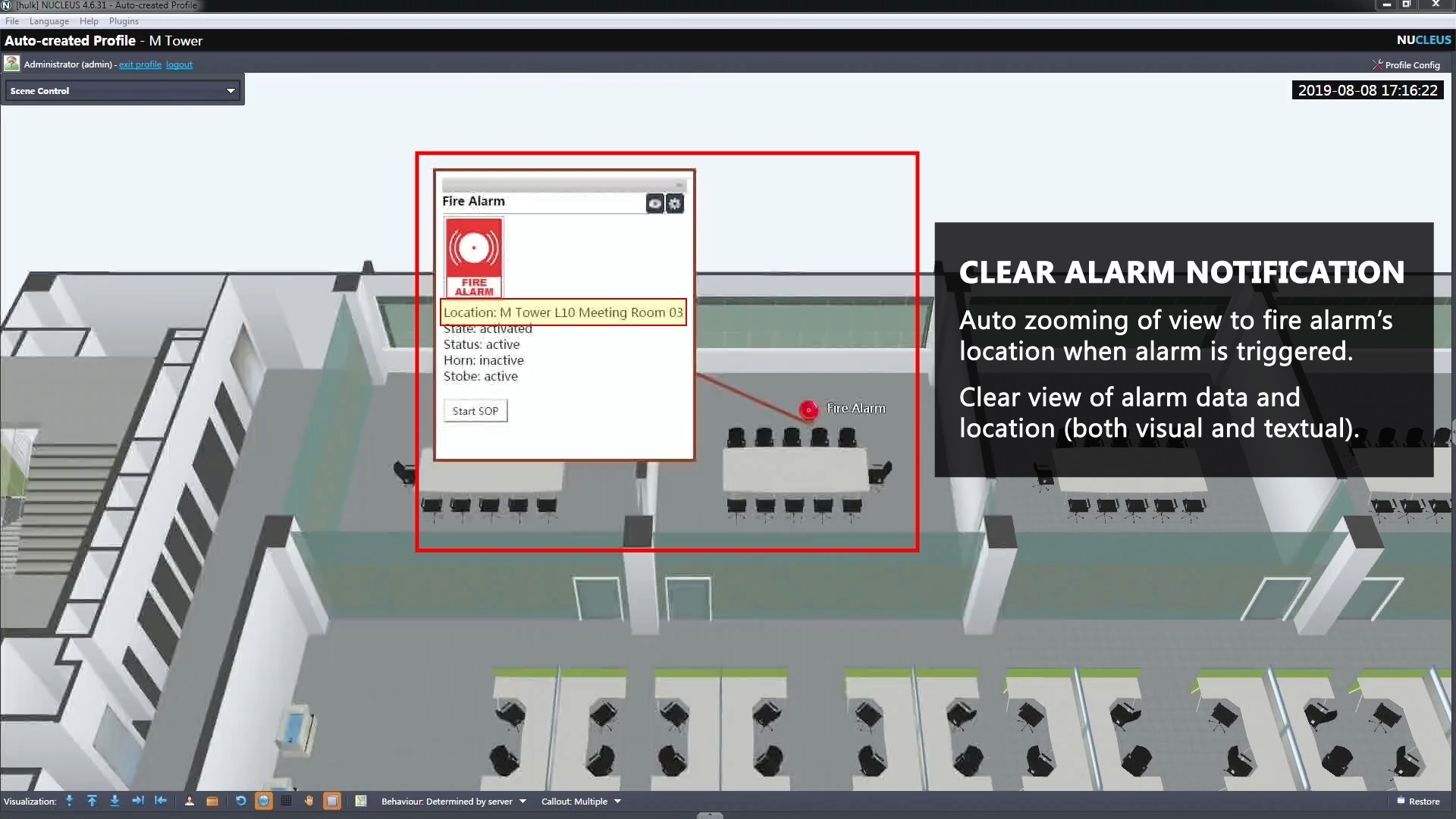
Supporting modules have unique features to efficiently help guide, predict, plan, broadcast instructions and report in times of emergencies.

Scenario Manager is designed to guide operators to systematically and effectively resolve emergencies and incidents. Fully customizable repository of scenario response plans provides Operators with clear step-by-step instructions, fully explained by rich multi-media, on how to handle each situation.
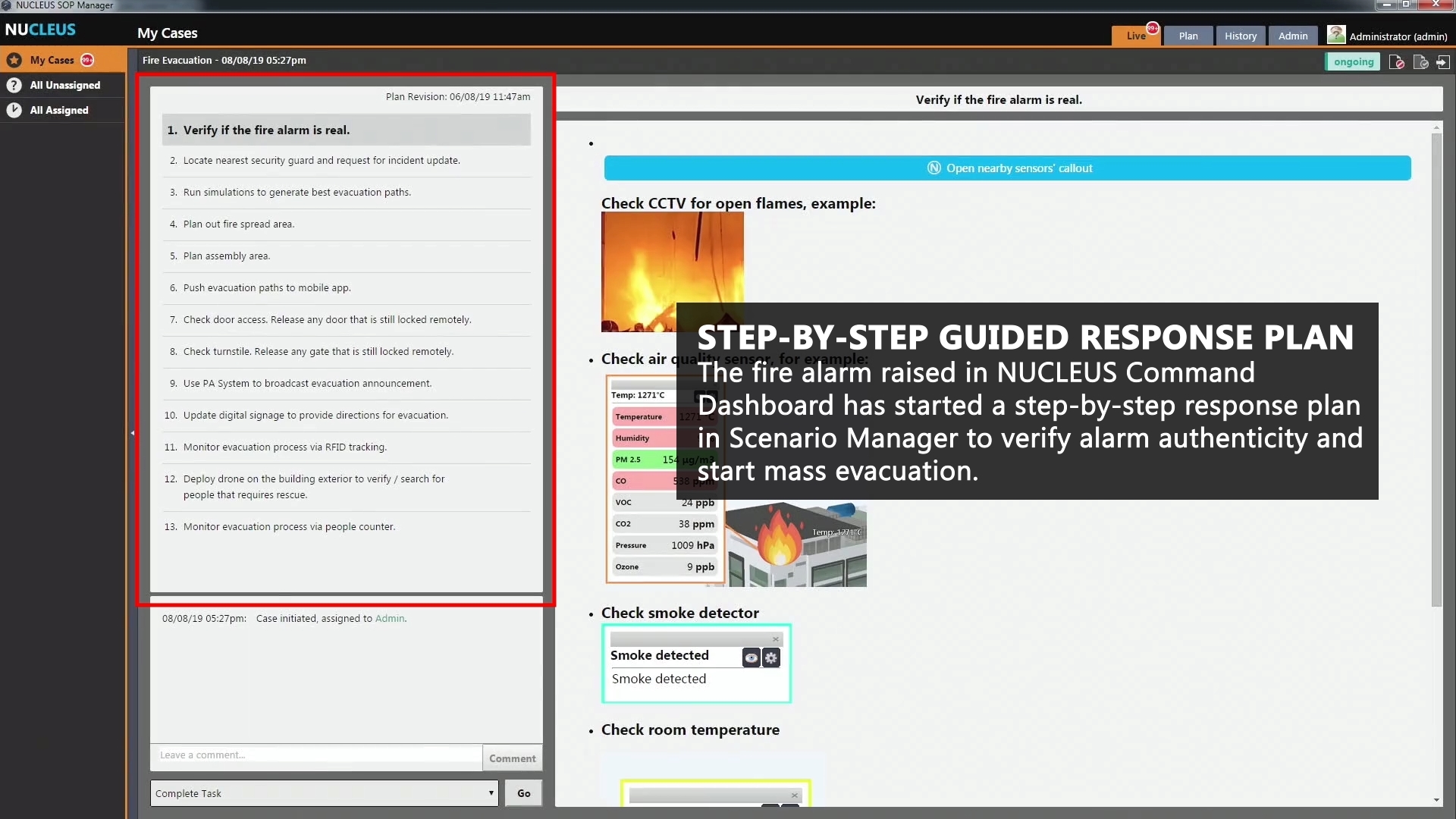
Being fully digital, the response plans corresponding to the detected situation can be triggered manually or automatically by alarms. This means operators no longer have to hunt through the book of SOPs for the correct response plan, cutting down reaction time.
Using NUCLEUS commands, the Scenario Manager can easily pull out related information from any integrated sensors and display on NUCLEUS 3D Command Dashboard. The seamless connection between systems allows for fast cross-referencing from consolidated data, saving the Operator a lot of time and effort needed to go into each individual system to hunt for the same information.
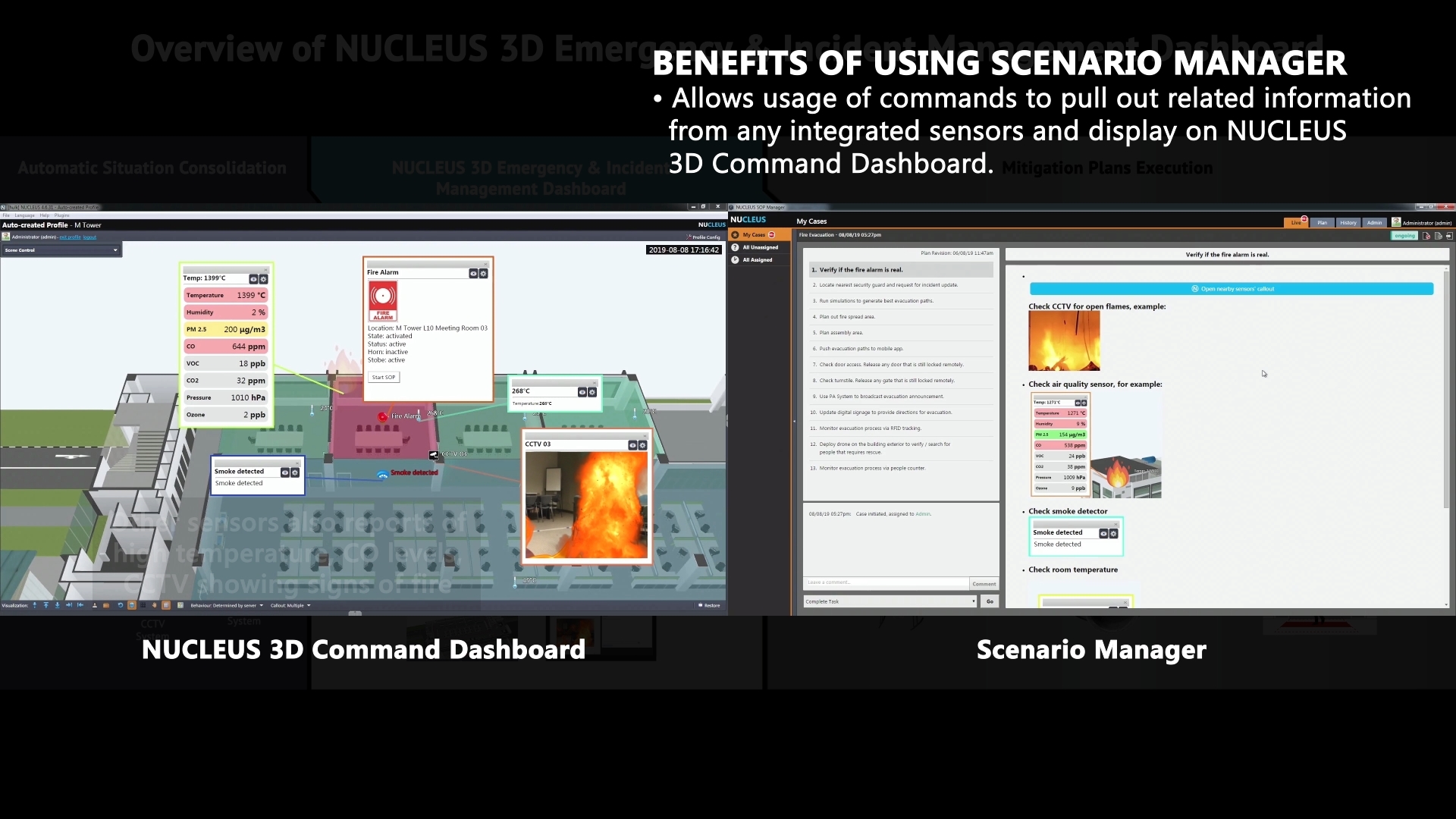
As the Operator carries out the instructions, he can record down his actions taken in the Scenario Manager. The records are time stamped and archived, for auditing purposes.
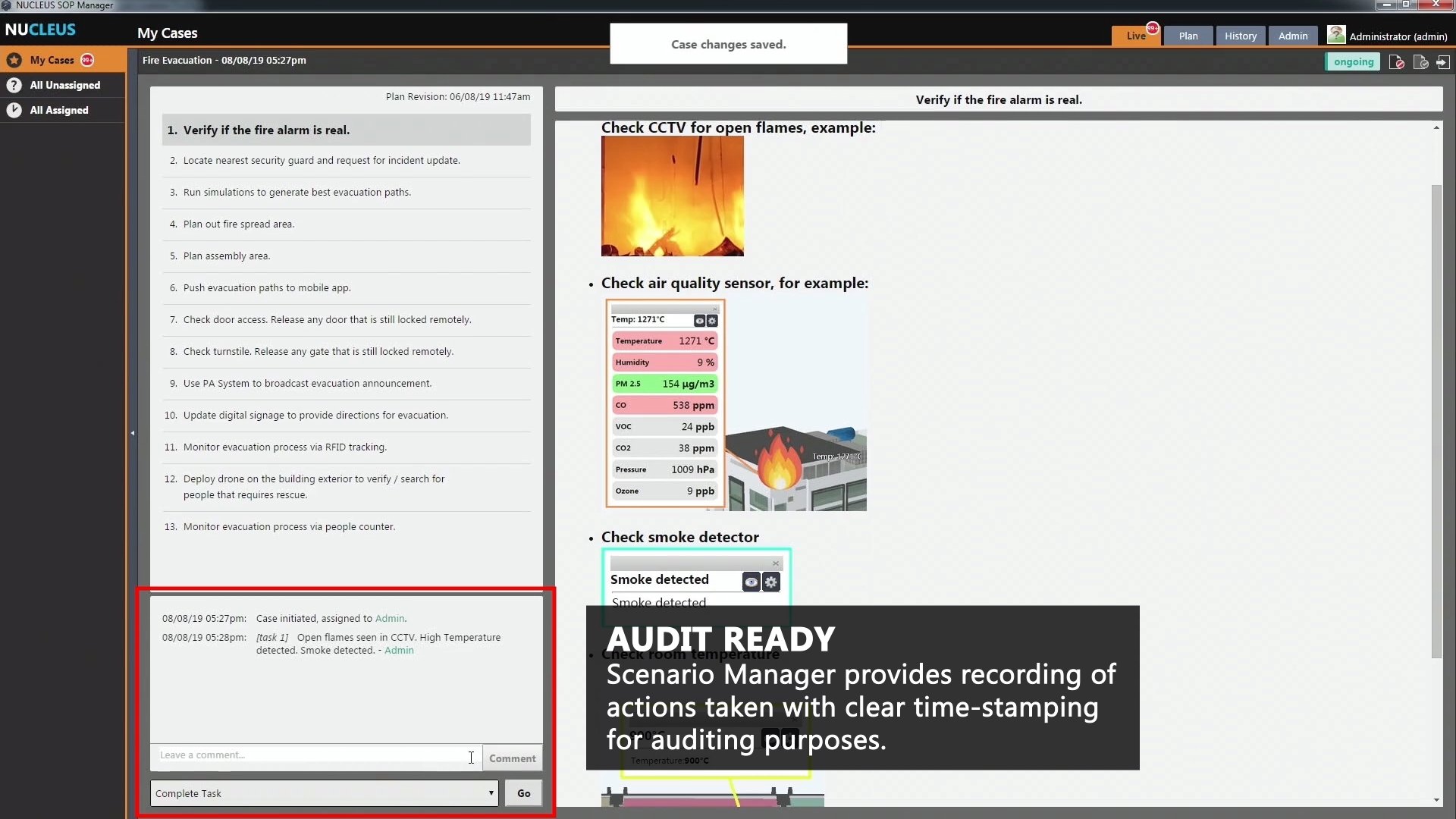
Maintaining digitized response plans in Scenario Manager becomes a breeze for content managers. Updates/new response plans can be easily created in Scenario Manager, and once the changes are completed, they are pushed to all Operator terminals immediately. This ensures all Operators are constantly kept updated, cutting down the hassle required to update hardcopies of SOPs.
NUCLEUS fire and smoke simulation provides Operators with better insights to possible scenario progression. The pattern, direction and speed of fire/smoke spread prediction helps evacuation marshals to choose safer routes and third party rescue workers to carry out rescue works more efficiently.
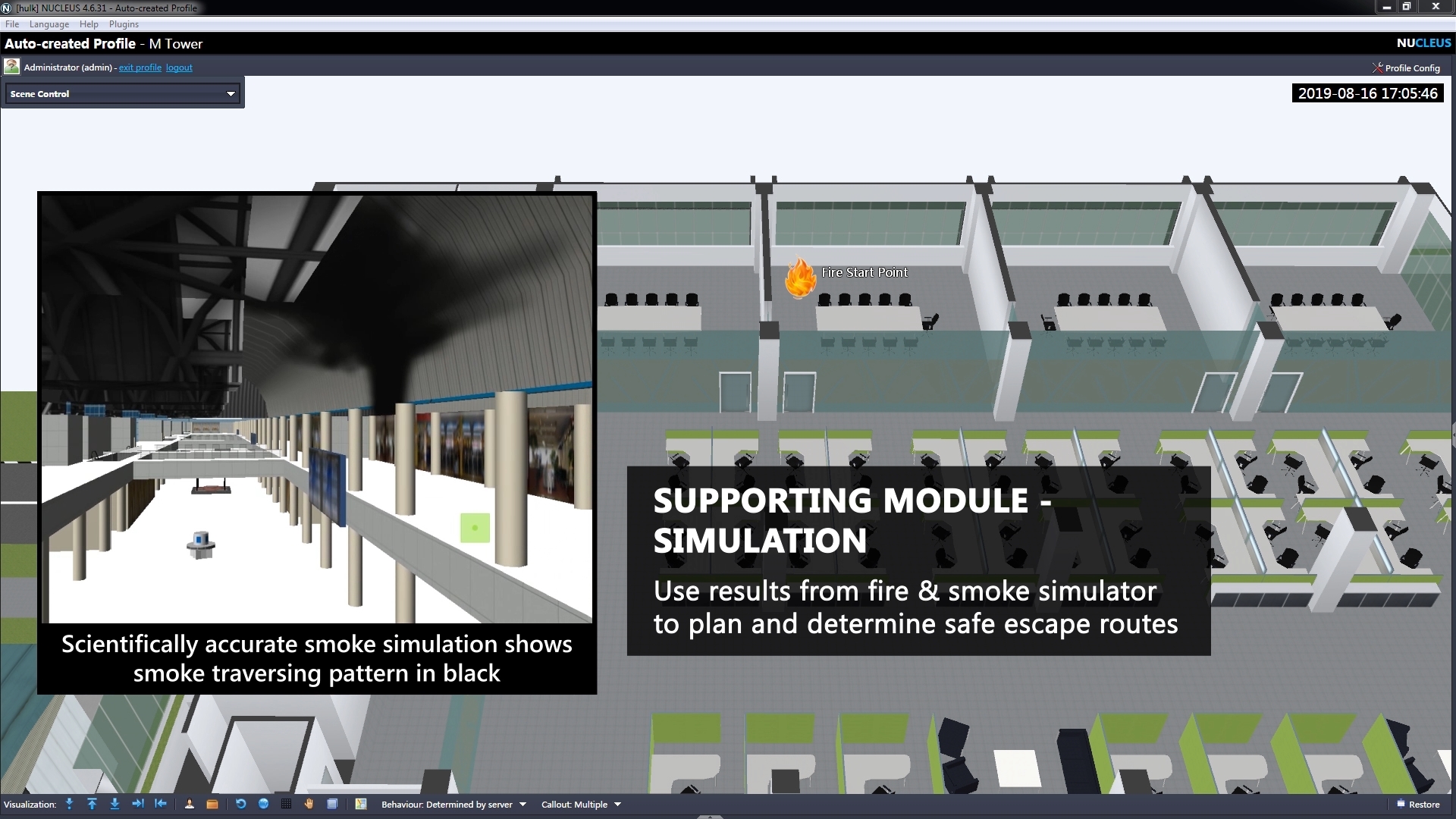
NUCLEUS planning module comes with a default library of 2D placemarks/3D objects for clear resource planning which can be created during normal day circumstances.
In times of emergencies, these pre-plans can be deployed as needed. When joint-operations are required or crisis management team need to quickly take situation under control, they can make use of the 2D/3D objects for dynamic plan revisions and briefing as the situation changes, on top of doing intuitive active management and resolving the situation.
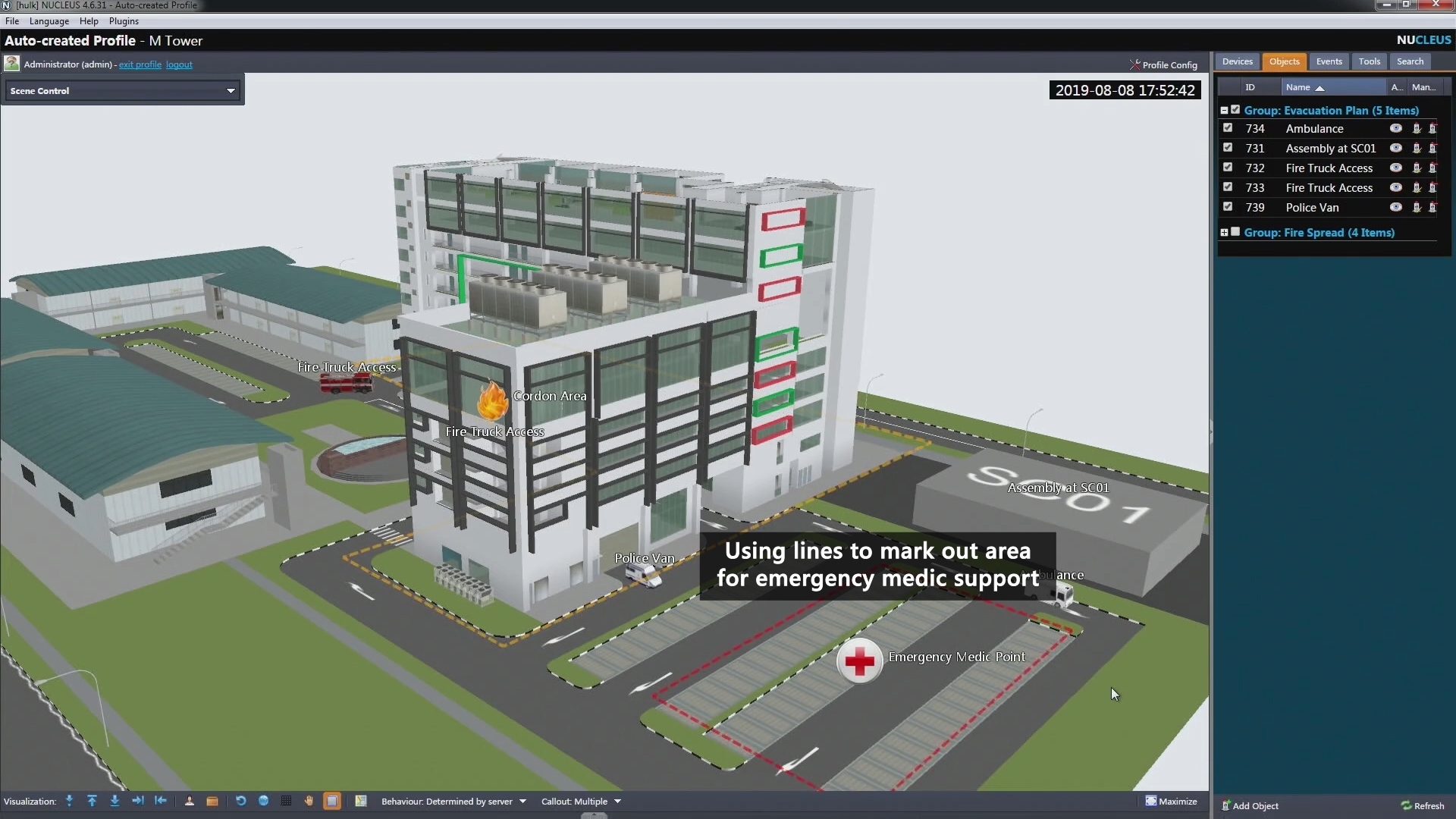
NUCLEUS’s all rounded evacuation module allows Operators to generate evacuation routes that can be pushed to the Command Center Dashboard, digital signage in the building and application on mobile phones. This helps to ensure that everyone in the building has access to the evacuation instructions, helping to reduce unnecessary chaos.
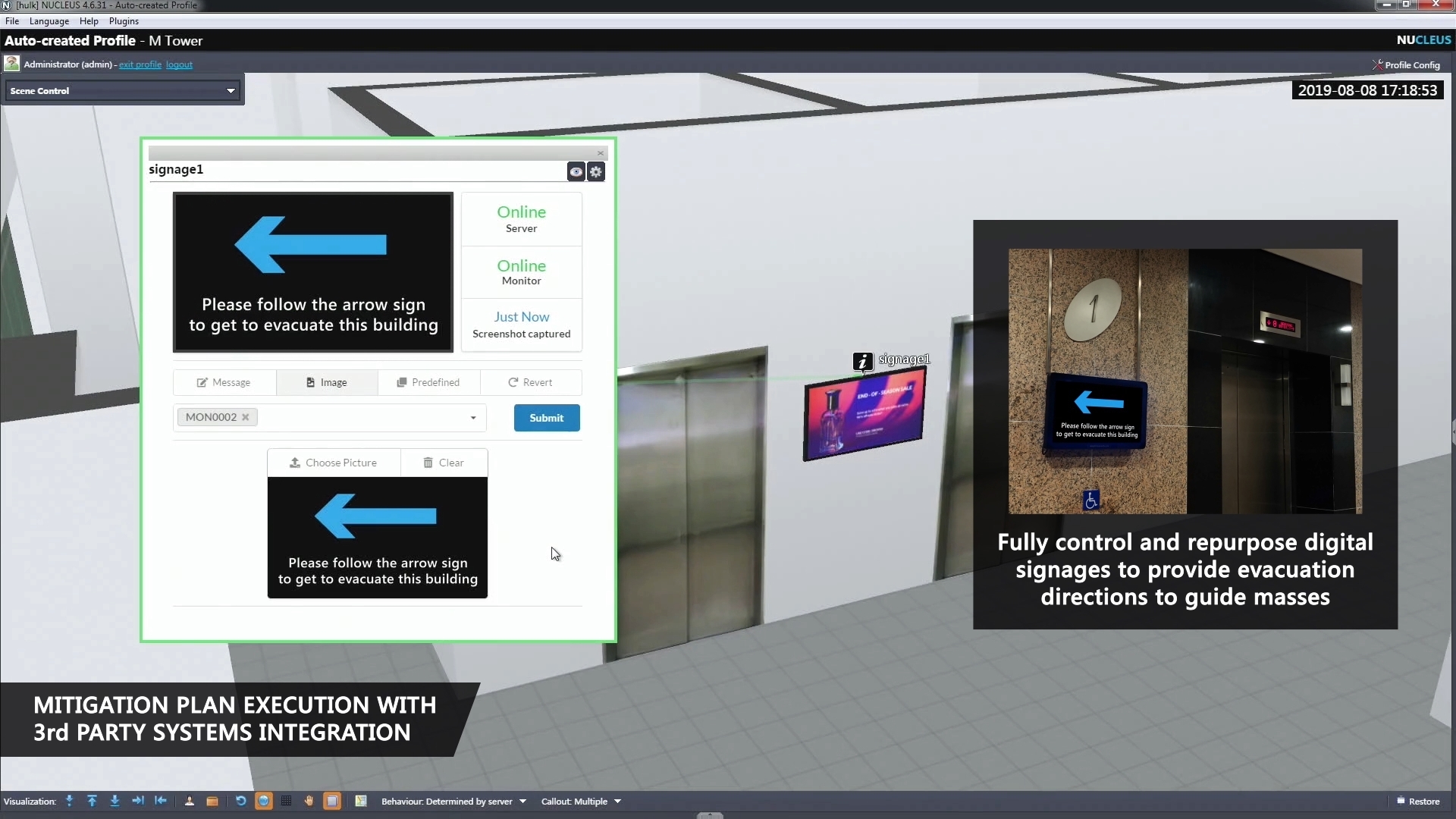
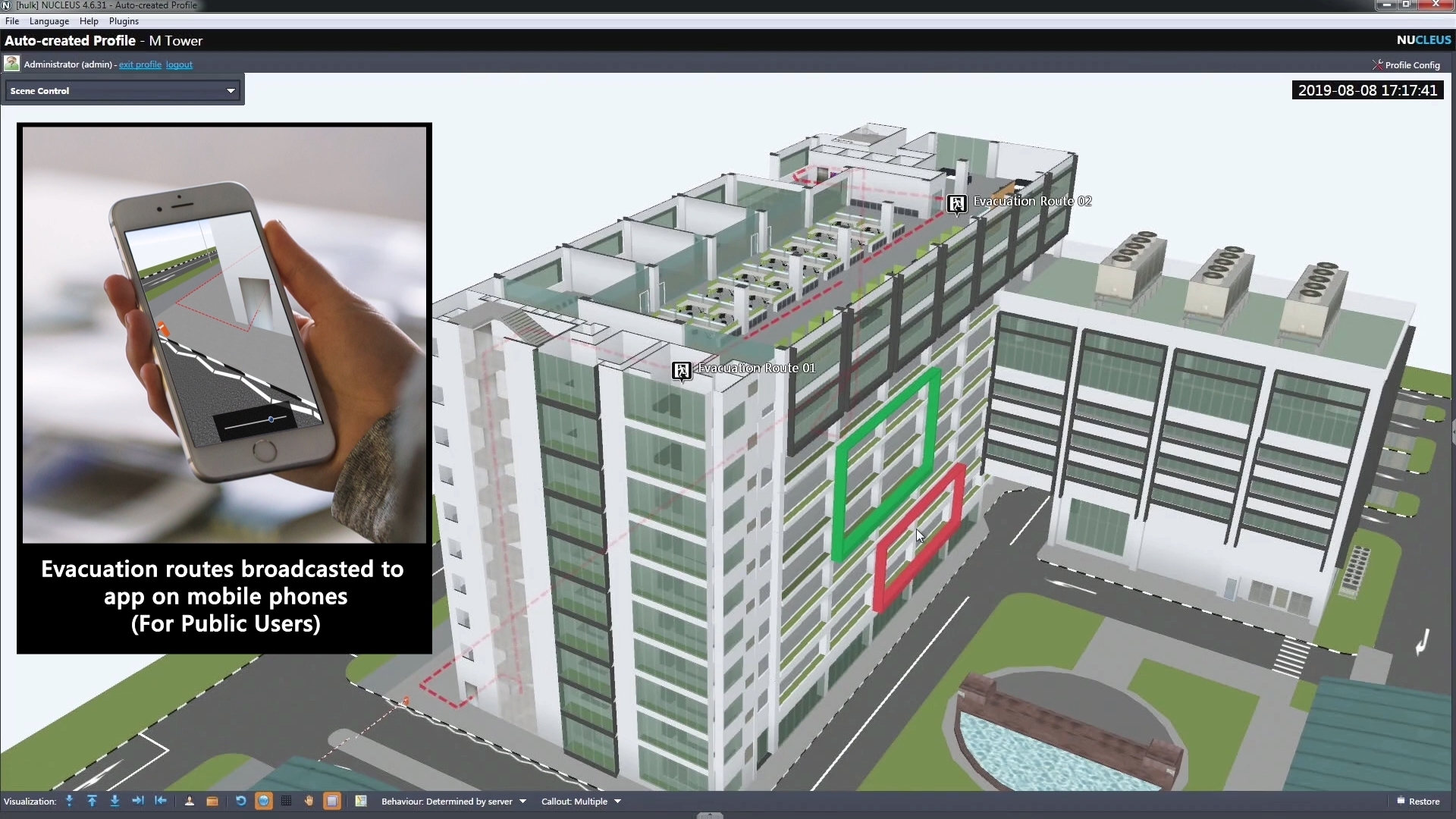
The mobile incident reporter application is easily accessible via mobile phones. This ensures that staff and members of the public can report incidents anytime and anywhere in the building. This helps to solve CCTV blind spots issue, and users can not only just report security issues (E.g. suspicious character spotted), but also report facilities related issues (E.g. toilet breakdown).
The incidents reported are immediately reflected on the Command Center Dashboard for quick review on actions to be taken. For cases which requires following up, Operators can continue to respond to the case via the incident reporter administrator dashboard.




